| 23 November |
• yesterday • tomorrow |
| Optional Memorials of Saint Clement I, Pope and Martyr; Saint Columban, Abbot; and/or Blessed Miguel Agustín Pro, Priest and Martyr |
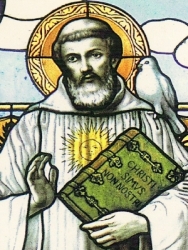
• Columbanus of Luxeuil
• Columbanus of Bobbio
• Columba of...
• Columban of...
24 November (Benedictines and Ireland)
Well-born, handsome and educated, Columbanus was torn between a desire for God and easy access to the pleasures of the world. Acting on advice of a holy anchoress, he decided to withdraw from the world. His family opposed the choice, his mother going so far as to block the door. Monk at Lough Erne. He studied Scripture extensively, and wrote a commentary on the Psalms. Monk at Bangor under abbot Saint Comgall.
In middle age, Columbanus felt a call to missionary life. With twelve companions (Saint Attala, Columbanus the Younger, Cummain, Domgal, Eogain, Eunan, Saint Gall, Gurgano, Libran, Lua, Sigisbert and Waldoleno) he travelled to Scotland, England, and then to France in 585. The area, though nominally Christian, had fallen far from the faith, but were ready for missionaries, and they had some success. They were warmly greeted at the court of Gontram, and king of Burgundy invited the band to stay. They chose the half-ruined Roman fortress of Annegray in the Vosges Mountains for their new home with Columbanus as their abbot.
The simple lives and obvious holiness of the group drew disciples to join them, and the sick to be healed by their prayers. Columbanus, to find solitude for prayer, often lived for long periods in a cave seven miles from the monastery, using a messenger to stay in touch with his brothers. When the number of new monks over-crowded the old fortress, King Gontram gave them the old castle of Luxeuil to found a new house in 590. Soon after, a third house was founded at Fontaines. Columbanus served as master of them all, and wrote a Rule for them; it incorporated many Celtic practices, was approved by the Council of Macon in 627, but was superseded by the Benedictine.
Problems arose early in the 7th century. Many Frankish bishops objected to a foreign missionary with so much influence, to the Celtic practices he brought, especially those related to Easter, and his independence from them. In 602 he was summoned to appear before them for judgment; instead of appearing, he sent a letter advising them to hold more synods, and to concern themselves with more important things than which rite he used to celebrate Easter. The dispute over Easter continued to years, with Columbanus appealing to multiple popes for help, but was only settled with Columbanus abandoned the Celtic calender when he moved to Italy.
In addition to his problems with the bishops, Columbanus spoke out against vice and corruption in the royal household and court, which was in the midst of a series of complex power grabs. Brunehault stirred up the bishops and nobilty against the abbot; Thierry ordered him to conform to the local ways, and shut up. Columbanus refused, and was briefly imprisoned at Besançon, but he escaped and returned to Luxeuil. Thierry and Brunehault sent an armed force to force him and his foreign monks back to Ireland. As soon as his ship set sail, a storm drove them back to shore; the captain took it as a sign, and set the monks free.
They made their way to King Clothaire at Soissons, Neustria and then the court of King Theodebert of Austrasia in 611. He travelled to Metz, France, then Mainz, Germany, Suevi, Alamanni, and finally Lake Zurich. Their evangelization work there was unsuccessful, and the group passed on to Arbon, then Bregenz, and then Lake Constance. Saint Gall, who knew the local language best, took the lead in this region; many were converted to the faith, and the group founded a new monastery as their home and base. However, a year later political upheaval caused Columbanus to cross the Alps into Italy, arriving in Milan in 612. The Christian royal family treated him well, and he preached and wrote against Arianism and Nestorianism. In gratitude, the Lombard king gave him a tract of land call Bobbio between Milan and Genoa in Italy. There he rebuilt a half-ruined church of Saint Peter, and around it he founded an abbey that was to be the source for evangelization throughout northern Italy for centuries to come.
Columbanus always enjoyed being in the forests and caves, and as he walked through the woods, birds and squirrels would ride on his shoulders. Toward the end of his life came word that his old enemies were dead, and his brothers wanted him to come back north, but he declined. Knowing that his time was almost done, he retired to a cave for solitude, and died as he had predicted. His influence continued for centuries as those he converted handed on the faith, the brothers he taught evanglized untold numbers more, and his brother monks founded over one hundred monasteries to protect learning and spread the faith.
Miracles ascribed to Columbanus include -
• to obtain food for a sick brother monk, he cured the wife of the donor
• once when he was surrounded by wolves, he simply walked through them
• at one point he needed a cave for his solitary prayers; a bear lived there; when Columbanus asked, the bear left
• when he needed water in order to live in the cave, a spring appeared nearby
• when the Luxeuil Abbey granary ran empty, Columbanus prayed over it and it refilled
• he multiplied bread and beer for his community
• he cured several sick monks, who then got straight out of bed to reap the monastery's harvest
• gave sight to a blind man at Orleans
• he destroyed a vat of beer being prepared for a pagan festival by breathing on it
• when the monastery needed help in the fields, he tamed a bear, and yoked it to a plough
543 at West Leinster, Ireland
• 21 November 615 in a cave at Bobbio, Italy of natural causes
• interred at the abbey church of Bobbio
• miracles reported at his tomb
• relics re-interred in a new altar there in 1482
• altar and shrine were refurbished and the relics re-interred in the early 20th century
• against floods
• Bobbio, Italy
• Missionary Society of Saint Columban
• motorcyclists
• bearded monk in the midst of wolves holding a book and Irish satchel
• bearded monk taming a bear
• bearded monk with sunbeams over his head
• Benedictine monk holding an abbot's staff, a missioner's cross, and wearing the sun on his chest
• Benedictine monk with a missioner's cross with a bear nearby
• monk in a bear's den with a fountain springing while he prays
• Penitencial
• Seventeen short Sermons
• Six Epistles
• Latin Poems
• A Monastic Rule
A man more holy, more chaste, more self-denying, a man with loftier aims and purer heart than Columbanus was never born in the Island of Saints. - Archbishop Healy
All we Irish dwelling on the edge of the world are disciples of Saints Peter and Paul and of the disciples who, under the Holy Spirit, wrote the Sacred Canon. We accept nothing outside this evangelical and apostolic teaching. There was no heretic, no Jew, no schismatic, but the Catholic Faith, as first delivered to us by you, the successor of the apostles, is kept unshaken. We, indeed, are, as I have said, chained to the Chair of Saint Peter; for although Rome is great and known afar, it is great and honored with us only by this Chair. - Saint Columbanus
https://catholicsaints.info/saint-columbanus/
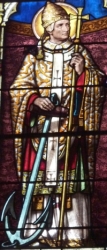
• Clement of Rome
• Clemens Romanus
Convert, brought to Christianity either by Saint Peter or by Saint Paul. One of the Seventy Apostles. Consecrated as a bishop by Saint Peter the Apostle. Mentioned in Philippians 4:3. Fourth Pope. Apostolic Father. The Basilica of Saint Clement in Rome, Italy, one of the earliest parish churches in the city, is probably built on the site of Clement's home. Author of the Epistle to the Corinthians. His name occurs in the Canon of the Mass. Origen and Saint Jerome identify him as working with Saint Paul the Apostle. Martyred in the persecutions of Trajan.
Rome, Italy
c.88
• martyred c.101
• relics in the basilica of Saint Clement
• boatmen, mariners, sailors, watermen
• marble workers
• sick children
• stonecutters
• Aarhus, Denmark, diocese of
• Dundee, Scotland
• Steenwijk, Netherlands
• Velletri, Italy
• anchor (miraculously freed when cast into the sea with an anchor bound to him)
• drowning man
• kneeling before an altar
First Epistle of Clement to the Corinthians
Charity unites us to God. There is nothing mean in charity, nothing arrogant. Charity knows no schism, does not rebel, does all things in concord. In charity all the elect of God have been made perfect. - Pope Saint Clement I
It was through jealousy and envy that the greatest and most upright pillars of the Church were persecuted and struggled unto death. Let us set before our eyes the good apostles. First of all, Peter, who because of unreasonable jealousy, suffered not merely once or twice but many times, and, having thus given his witness, went to the place of glory that he deserved. It was through jealousy and conflict that Paul showed the way to the prize for perseverance. He was put in chains seven times, sent into exile, and stoned; a herald both in the east and the west, he achieved a noble fame by his faith. He taught justice to all the world and, when he had reached the limits of the western world, he gave his witness before those in authority; then he left this world and was taken up into the holy place, a superb example of endurance. Around these men with their holy lives there gathered a great throng of the elect, who, though victims of jealousy, gave us the finest example of endurance in the mist of many indignities and tortures. We are writing this, beloved, not only for your admonition but also as a reminder to ourselves; for we are placed in the same arena, and the same contest lies before us. Hence we ought to put aside vain and useless concerns and should consider what is good, pleasing and acceptable in the sight of him who made us. Let us fix our gaze on the blood of Christ, realizing how precious it is to his Father, since it was shed for our salvation and brought the grace of repentance to all the world. - from a letter to the Corinthians by Pope Saint Clement I
https://catholicsaints.info/pope-saint-clement-i/
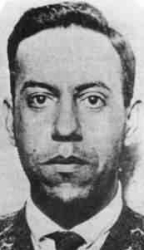
Son of a mining engineer. From childhood he was known for high spirits and cheerfulness, and he grew up in a pious home. Born to privilege, he had great affinity for the poor and working classes. Victim of recurring stomach disorder. Jesuit novice at 20. Exiled during the Mexican Revolution, he continued his studies abroad.
Ordained in Belgium in 1925 at age 36, he returned to Mexico in 1926, a time when churches were closed, priests were in hiding, and persecution of the Church was government policy. Father Miguel used disguises to conduct an underground ministry, bringing the comfort of charity and the sacraments to the covert faithful.
Falsely accused in 1927 of a bombing attempt, Pro became a wanted man, was betrayed to the police, and without trial, he was sentenced to death. The photograph on this page was taken the day of his martyrdom. As he was about to be shot, he forgave his executioners, refused a blindfold, and died shouting "Long live Christ the King!" The government prohibited a public funeral, but the faithful lined the streets when his body passed.
13 January 1891 at Guadalupe, Zacatecas, Mexico
shot by firing squad on 23 November 1927 in Mexico City, Mexico
25 September 1988 by Pope John Paul II
We ought to speak, shout out against injustices, with confidence and without fear. We proclaim the principles of the Church, the reigh of love, without forgetting that it is also a reign of justice. - Miguel Agustin Pro
Does our life become from day to day more painful, more oppressive, more replete with sufferings? Blessed be He a thousand times who desires it so. If life be harder, love makes it also stronger, and only this love, grounded on suffering, can carry the Cross of my Lord, Jesus Christ. - Miguel Agustin Pro
I believe, O Lord, but strengthen my faith. Heart of Jesus, I love Thee; but increase my love. Heart of Jesus, I trust in Thee; but give greater vigor to my confidence. Heart of Jesus, I give my heart to Thee; but so enclose it in Thee that it may never be separated from Thee. Heart of Jesus, I am all Thine; but take care of my promise so that I may be able to put it in practice even unto the complete sacrifice of my life. - Miguel Agustin Pro
https://catholicsaints.info/blessed-miguel-agustin-pro/
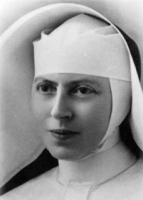
• Sister Maria Angela
• Henrietta Alfieri
• prisoner 3209
• Mother of San Vittore
• Angel of San Vittore
• La Mamma di San Vittore
From childhood Enrichetta felt a call to religious life, and joined the Sisters of Charity of Saint Joan Antida Thouret on 20 December 1911. She worked as a kindergarten teacher in Vercelli, Italy, but was forced to quit when she developed Pott's disease, a form of tuberculosis of the spine, in 1917. On 25 February 1923 she was miraculously cured by a pilgrimage to Lourdes, France through the intercession of Mary Immaculate.
She recovered so completely that on 24 May 1923 Sisters Maria Angela was assigned to prison ministry at San Vittore Prison in Milan, Italy. Her work with the prisoners was a great success, and she became known as the Mother and Angel of San Vittore, and was named the superior of the Sisters there in 1939.
She was there when it became an SS headquarters and prison for Jews, priests, nuns and resistance workers who were fighting the Axis powers of World War II. She and the Sisters helped them by smuggling in supplies, smuggling out messages and working with Church authorities to intervene for the prisoners, saving many in the process. On 23 September 1944 a message from a prisoner was intercepted that was director to Enrichetta, and she was arrested for spying and sentenced to death or imprisonment in Germany. Church officials, including Blessed Alfredo Ildefonso Schuster, Archbishop of Milan, intervened for her, and she was transferred to the Sisters' house in Brescia, Italy where she wrote a memoir of her imprisonment. On 7 May 1945, at the end of the war, she was re-assigned to the San Vittore where she administered to prisoners of war - including the former jailers.
23 February 1891 in Borgo Vercelli, Vercelli, Italy
23 November 1951 in Milan, Italy of natural causes
26 June 2011 by Pope Benedict XVI
https://catholicsaints.info/blessed-enrichetta-alfieri/
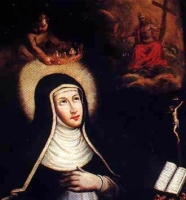
Margarita, Margherita, Marguerite
Born to the nobility, daughter of Amadeo of Savoy, Lord of Piedmont and titular Prince of Achaea, and Catherine of Geneva. Married to Theodore Paleologus, marquis of Montferrat on 17 January 1403. Widowed in 1418. Declined a marriage offer from Philip, Visconti of Milan. Influenced by Saint Vincent Ferrer, she became a Dominican tertiary. In 1426 she founded a house at Alba, Liguria and served as its Prioress. In 1451, 25 years later, she received papal approval for the congregation from Pope Eugene IV. She was subject to visions and ecstasies, and was a reputed miracle worker. Her later years were spent under a cloud of controversy as her house faced false charges of doctrinal irregularities, and she charges of being overly strict with her nuns.
21 June 1382 at Pignerol, Italy
• 23 November 1464 at Alba, Piedmont, Italy of natural causes
• re-interred at her monastery in 1481
9 October 1669 by Pope Clement IX (cultus confirmed)
being given three arrows by Christ
God of holiness, you taught Blessed Margaret to leave the royal court and to follow you in humility. Following her example may we learn to cherish what is divine and to overcome all adversities through love of your cross. We ask this through our Lord Jesus Christ, your Son, who lives and reigns with you and the Holy Spirit, one God, for ever and ever. - General Calendar of the Order of Preachers
https://catholicsaints.info/blessed-margaret-of-savoy/
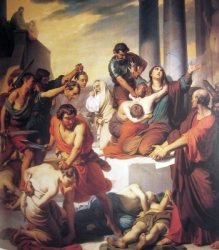
Felicitas
Rich, noble widow. Mother of seven sons, all of whom were martyred - Alexander, Vitalis, Martial, Januarius, Felix, Philip and Silvanus.
Felicity was devoted to charity and caring for the poor. She was arrested for her faith and ordered to worship pagan gods; she refused. Her sons were arrested and given the same order; they refused. After a series of appeals, all of which were turned down, they were all ordered executed by emperor Antoninus. Felicity was forced to watch as her children were murdered one by one; after each one she was given the chance to denouce her faith. Martyr.
• beheaded in 165 at Rome, Italy
• buried in the cemetery of Maximus beside the Via Salaria, Rome
• relics in Capuchin church at Montefiascone, Tuscany, Italy
• against the death of children
• against sterility
• martyrs
• to have male children
• widows
• Badia di Cava, Italy, Abbey of
• woman in widow's weeds holding a palm of martyrdom
• woman with a palm, book, and children at her feet
• woman with Saint Andrew the Apostle
• woman with seven sons
https://catholicsaints.info/saint-felicity-of-rome/
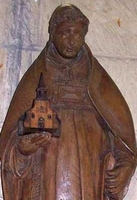
• Apostle of Hasbein
• Tron, Trond, Trudjen, Trudon, Trudone, Trutjen, Truyen
Son of Blessed Adela. Related to the dukes of Austrasia. Benedictine monk under Saint Remaclus. Studied at the cathedral at Metz, France. Ordained by Saint Clodulf of Metz. Noted preacher. Built a church on the land around his family's home c.656, and had it blessed by Saint Theodard of Liege in the names of Saint Quintinus and Saint Remigius of Rheims. Evangelized the throughout the area of Hasbein, and as the converts grew he was forced to build a monastery which was later named for him. Founded a convent near Bruges, Belgium c.660. The assorted movements of his relics have led to several local lists having different dates for his memorial.
7th century in Hasbein (Hasbeye), Brabant province
• c.695 of natural causes
• buried in the church of Saint Quintinus and Saint Remigius that he had built
• relics translated in 880
• relics later hidden to save them from Norman incursions, and lost
• relics re-discovered in 1169
https://catholicsaints.info/saint-trudo/
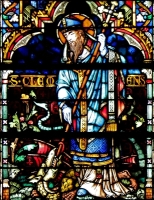
Bishop of Metz, France; tradition says he was sent there as a missionary by Saint Peter the Apostle.
Legend says that when Clement arrived in Metz, the area was besieged by the Graoully, a large, poison-breathed serpent that lived in a local Roman amphitheatre with an army of snakes. Clement chased away the snakes and banished the Graoully by making the Sign of the Cross at them. This led to the conversion of the whole town.
• with a dragon
• raising a girl (often dressed as a princess) from the dead (refers to converting a king by bringing his daughter back to life)
• with a stag kneeling at his feet (refers to a stag hiding from hunters by runnning to him for sanctuary which convinced the hunters of Clement's holiness and led to their conversion)
https://catholicsaints.info/saint-clement-of-metz/
Amfilokius, Amphilochius, Anfiloquio, Anfilochio
Cousin and friend of Saint Gregory Nazianus; close friend of Saint Basil the Great. Studied law and rhetoric in Constantinople, and taught rhetoic there. Bishop of Iconium (modern Konya, Turkey) in 374. Fought against heresies of Arianism, the Manichaeans and the Messalians. Attended the Council of Constantinople in 381. Presided over the synod in Sida, Pamphylia in 394. He wrote poetry in classical Greek, and his letters to Gregory and Basil have survived to today.
339 in Cappadocia, Asia Minor (in modern Turkey)
400 of natural causes
https://catholicsaints.info/saint-amphilocus-of-iconium/
Laouénan, Louénan, Lavan
• 23 January (in Brittany)
• 2nd Sunday in July (procession in Tréflaouénan, France)
Monk and then abbot of the monastery of Saint Tudwals of Tréguier in Brittany (in modern France) c.528 to c.564 from where he evangalized the region.
early 6th century Britain
• c.564 of natural causes
• relics enshrined in Tréflaouénan, France until the 16th century
• it became the custom to swear oaths involving credit and debt on the relics of Saint Loëvan
Tréflaouénan, France
https://catholicsaints.info/saint-loevan-of-brittany/
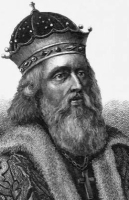
• Alexander Nevski
• Alexander Nevsky
• 30 August (translation of relics)
• 23 May (Russian Orthodox as one of the saints of Rostov and Yaroslavl)
Grand Duke of Novgorod and Kiev. He defeated the Swedes in battle on the River Neva; from that he derived his surname of Newski (Nevski). Defended his land against invading Tatars. Confessor of the faith.
1219 in Vladimir, Russia
• 1263 in Gorodetz, Russia
• relics at Saint Petersburg, Russia
https://catholicsaints.info/saint-alexander-newski/
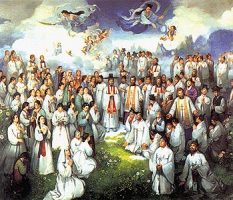
• Caecilia Yu So-Sa
• Jechillia Yu So-Sa
20 September as one of the Marytrs of Korea
Married lay woman in the apostolic vicariate of Korea. Mother of Saint Paul Chong Hasang and Saint Jung Hye. Martyr.
1761 in Seoul, South Korea
23 November 1839 in Bo-jeong Prison, Seoul, South Korea of injuries following repeated whippings
6 May 1984 by Pope John Paul II
https://catholicsaints.info/saint-cecilia-yu-sosa/
Faletrius, Faletrus, Falier, Falère, Phaletrius, Phalier, Phalitrus
Pilgrim from Limoges, France to Jerusalem. Monk at Issoudun, France. Hermit at Chabris, France.
latter 5th century Gaul (in modern France)
• 525 of natural causes
• his tomb became a pilgrimage site and a place of healing for sick children
• relics burned by Huguenots
sick children
https://catholicsaints.info/saint-falitrus-of-chabris/
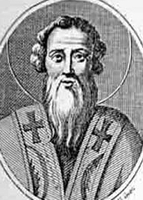
Gregory of Agrigentum
Bishop of Girgenti, Italy. Wrote a commentary on the book of Ecclesiastes, which has survived, and was a noted Bible teacher, explaining the Scriptures in a plain way to plain people.
Girgenti, Sicily, Italy
c.638 of natural causes
https://catholicsaints.info/saint-gregory-of-girgenti/
• Detlev of Parkentin
• Detlef of...
Born to the nobility. Premonstratensian canon. Canon of the Premonstratensian monastery in Ratzeburg (in modern Germany). Bishop of Ratzeburg. Lived as a simple friar, but was known for his charity.
14th century Mecklenburg (in modern Germany)
23 November 1419 of natural causes
https://catholicsaints.info/blessed-detlev-of-ratzeburg/
Sister María Cecilia
Member of the Visitation Nuns. Martyred in the Spanish Civil War.
10 January 1910 in Azpeitia, Guipúzcoa, Spain
23 November 1936 in Madrid, Spain
10 May 1998 by Pope John Paul II
https://catholicsaints.info/blessed-felicitas-cendoya-araquistain/
Adalbert of Monte Caramanico
Benedictine monk at Cassoria, Abruzzi, Italy. Worked for a while with Saint Guy of Casauria. Retired to live as a hermit on Mount Caramanico where he eventually founded the abbey of Saint Nicholas.
c.1045 of natural causes
https://catholicsaints.info/saint-adalbert-of-casauria/
Cousin of Emperor Claudius. Martyred with Saint Irenaeus of Chiusi for ministering to Christian prisoners, and burying martyrs.
273 at Chiusi, Tuscany, Italy
Chiusi, Italy
• with Saint Irenaeus
• with Saint Secundus
https://catholicsaints.info/saint-mustiola-of-chiusi/
• Paulinus of Wales
• Paulhen, Pewlin, Polin
Spiritual student of Saint Illtyd. Monk. Founded the monastery of Whitland in Wales and served as its abbot. Spritual teacher of Saint David of Wales and Saint Teilo of Llandaff.
c.505
https://catholicsaints.info/saint-paulinus-of-whitland/
Richildis
Benedictine anchoress who lived walled up in a cell near Saint Wiborada, under obedience to the abbot of Saint Gall in Switzerland.
c.946 of natural causes
https://catholicsaints.info/saint-rachildis-of-saint-gall/
Sisinnio, Sisinio
Bishop. Tortured and martyred in the persecutions of Diocletian.
stabbed with a sword in Cyzicus in the Hellespont in the early 4th century
https://catholicsaints.info/saint-sisinius-of-cyzicus/
Lucrezia
Consecrated virgin. Martyred in a period of imperial Roman persecution.
306 in Mérida, Spain
https://catholicsaints.info/saint-lucretia-of-merida/
Niece of Saint Gertrude of Nivelles. Abbess of the abbey in Nivelles, Belgium.
c.670
https://catholicsaints.info/saint-wilfetrudis-of-nivelles/
Fled into the mountains for a period to escape the persecutions of Diocletian. Bishop of Fano, Italy.
c.343
https://catholicsaints.info/saint-paternian-of-fano/
Severino, Severinus
Sixth-century hermit who lived in a cell in Paris, France.
https://catholicsaints.info/saint-severin-of-paris/
Benedictine monk at Farfa. Abbot of Casauria, Italy.
1045
https://catholicsaints.info/blessed-guy-of-casauria/
Martyr.
Alexandria, Egypt
https://catholicsaints.info/saint-faustina-of-alexandria/
Martyr.
Alexandria, Egypt
https://catholicsaints.info/saint-augusta-of-alexandria/
CatholicSaints.Info Portable Edition